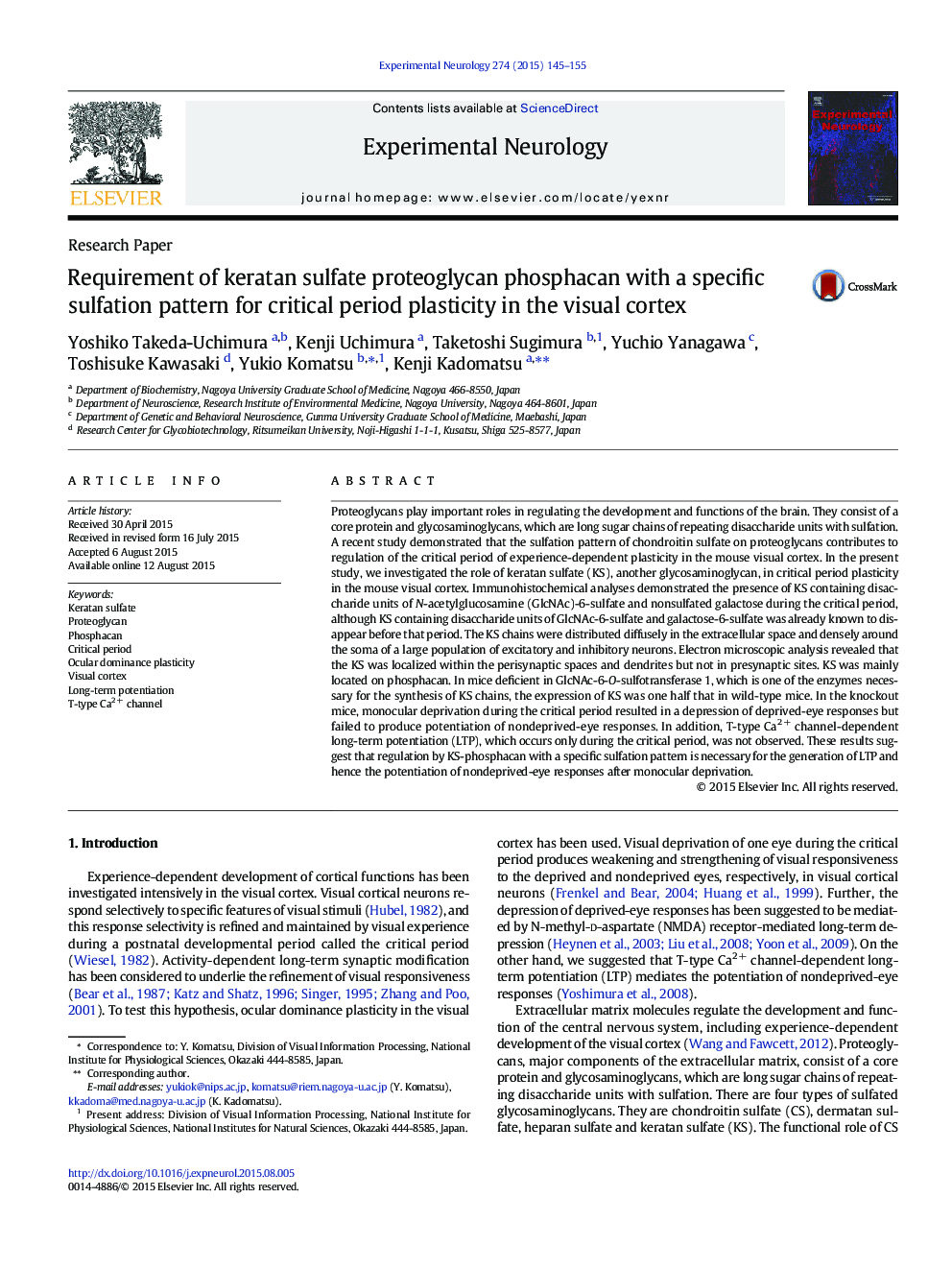| کد مقاله | کد نشریه | سال انتشار | مقاله انگلیسی | نسخه تمام متن |
|---|---|---|---|---|
| 3055340 | 1186479 | 2015 | 11 صفحه PDF | دانلود رایگان |
Proteoglycans play important roles in regulating the development and functions of the brain. They consist of a core protein and glycosaminoglycans, which are long sugar chains of repeating disaccharide units with sulfation. A recent study demonstrated that the sulfation pattern of chondroitin sulfate on proteoglycans contributes to regulation of the critical period of experience-dependent plasticity in the mouse visual cortex. In the present study, we investigated the role of keratan sulfate (KS), another glycosaminoglycan, in critical period plasticity in the mouse visual cortex. Immunohistochemical analyses demonstrated the presence of KS containing disaccharide units of N-acetylglucosamine (GlcNAc)-6-sulfate and nonsulfated galactose during the critical period, although KS containing disaccharide units of GlcNAc-6-sulfate and galactose-6-sulfate was already known to disappear before that period. The KS chains were distributed diffusely in the extracellular space and densely around the soma of a large population of excitatory and inhibitory neurons. Electron microscopic analysis revealed that the KS was localized within the perisynaptic spaces and dendrites but not in presynaptic sites. KS was mainly located on phosphacan. In mice deficient in GlcNAc-6-O-sulfotransferase 1, which is one of the enzymes necessary for the synthesis of KS chains, the expression of KS was one half that in wild-type mice. In the knockout mice, monocular deprivation during the critical period resulted in a depression of deprived-eye responses but failed to produce potentiation of nondeprived-eye responses. In addition, T-type Ca2 + channel-dependent long-term potentiation (LTP), which occurs only during the critical period, was not observed. These results suggest that regulation by KS-phosphacan with a specific sulfation pattern is necessary for the generation of LTP and hence the potentiation of nondeprived-eye responses after monocular deprivation.
Journal: Experimental Neurology - Volume 274, Part B, December 2015, Pages 145–155
